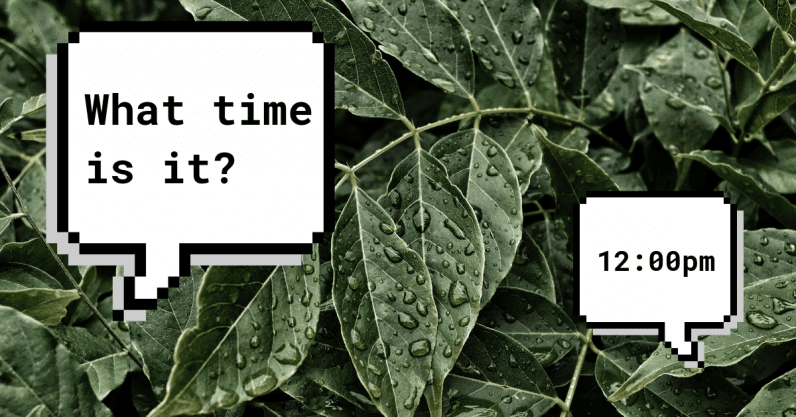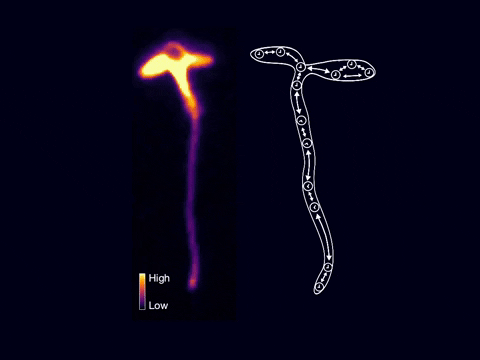Plants Can Communicate To Agree On What Time It Is
Aadhya Khatri - Sep 04, 2019

Plant cells can communicate with each other to time their protein production. This might explain why they do not need a brain to survive
- Researchers Find A Way To Grow Tomatoes In Space
- Potted Plants Can't Act Like A Air Purifier As You Might Think
- Artificial Trees Promise To Purify Polluted Air Better Than Real Ones
Jet lag occurs on those who have to travel across multiple time zones, and it speaks volume of how powerful the biological clock is on our body.
The master clock in our brain will govern the synchronization of the molecular ones in our cells. It also uses light signals from the eyes to make sure that our body works in sync with the outer environment.
Plants have a similar mechanism to tell time, which is vital for their existence. For example, it needs to know when the sun will rise to initiate photosynthesis, when the hottest part of the day will come to turn on the heat-protecting system, or when the pollinators are likely to come to produce nectar. And it appears that all the cells in a plant have their own clocks.

However, unlike us, plants do not have a master clock because they have no brain, but for some reason, they are still able to sync the cellular rhythms.
Scientists recently found the answer for that mystery, which is local self-organization. This phrase refers to the way plant cells communicate with their neighboring cells to tell time. A flock of birds or a school of fish use the same method to sync their movements with each other.
Some earlier research pointed out that the timing in parts of the same plants is different. They came to this conclusion after measuring the peaks of protein production.
Clock proteins switch on the production of other proteins of the plants that are in charge of photosynthesis before the sun rises.
In Arabidopsis thaliana seedlings, at each organ, the amount of clock protein peaks at different time of day. Each of these organs, including stems, leaves, and roots, have their own micro-environments, which generates different signals. According to the information they receive, plant organs will set their own pace accordingly.
This leads to a question of why plants do not suffer from some kind of an internal jet lag, and why their parts can work in harmony without falling into chaos.
What they do is to create spatial wave patterns, similar to sports fans making Mexican waves when they stand up after the people next to them do the same thing, creating a wave-like movement.

When cells start communicating, these waves will be formed. When a cell’s protein amount peaks, it will ‘tell’ the neighboring slower cells to do the same. These receivers will follow suit and produce more protein. They, in turn, communicate the signal to their neighbors. This kind of pattern is quite common in nature. Fireflies use the same technique the sync their flashes with each other.
The process of making decision locally and the way plant cells communicate with each other might be the reason why they can work seamlessly without a brain to control them all.
This mechanism allows different organs in a plant to decide how to grow. For example, cells in root or shoot can adjust their developing rate according to the distinct conditions of where they are. This can be observed when the shoot bends toward where there is more sunlight, or the roots grow to the place with more nutrients or water. This local decision-making mechanism can also let the plant survive after suffering from a loss of organs.
Scientists use the term plasticity to call plant ability to adapt to changes in the environments, stemming from their ability to sync actions without a brain. This finding may pave the way for the making of plants that can react more quickly to changes in their environments.
Featured Stories

Features - Jul 01, 2025
What Are The Fastest Passenger Vehicles Ever Created?

Features - Jun 25, 2025
Japan Hydrogen Breakthrough: Scientists Crack the Clean Energy Code with...

ICT News - Jun 25, 2025
AI Intimidation Tactics: CEOs Turn Flawed Technology Into Employee Fear Machine

Review - Jun 25, 2025
Windows 11 Problems: Is Microsoft's "Best" OS Actually Getting Worse?

Features - Jun 22, 2025
Telegram Founder Pavel Durov Plans to Split $14 Billion Fortune Among 106 Children

ICT News - Jun 22, 2025
Neuralink Telepathy Chip Enables Quadriplegic Rob Greiner to Control Games with...

Features - Jun 21, 2025
This Over $100 Bottle Has Nothing But Fresh Air Inside

Features - Jun 18, 2025
Best Mobile VPN Apps for Gaming 2025: Complete Guide

Features - Jun 18, 2025
A Math Formula Tells Us How Long Everything Will Live

Features - Jun 16, 2025
Comments
Sort by Newest | Popular